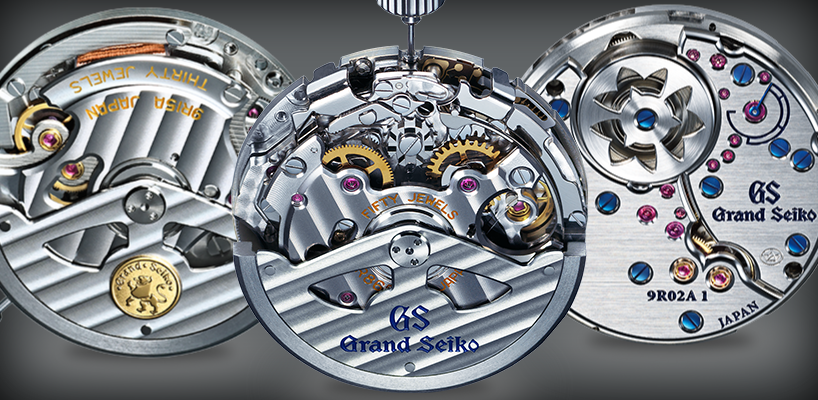Grand Seiko Spring Drive Explained
Sunday - 09 February 2020

While the beautiful design of a watch is something to be marvelled at, what happens on the inside can be equally - if not more - important. Steve Ashby takes some time to review one of the watch world’s most impressive calibres; the Grand Seiko Spring Drive.
Like any enterprise that shares even the smallest relationship with fashion or technology, the watch industry is susceptible to change and innovation. However, despite the coming and going trends, every few years or so something comes along that revolutionises the market all together. Something truly original and fresh.
The house of Seiko has long been known for its prowess and passion for introducing new technologies, one such technology being their coveted Spring Drive movement.
This revolutionary calibre is as incredible on the inside as it is beautiful to see in action. Having won a number of accolades since being introduced shortly after we entered the year 2007, this movement is the only mechanical calibre that allows the seconds hand to truly ‘sweep’ around the dial, and to see it in person is simply mesmerising. What makes this feat of master-craftsmanship even more impressive is that the Spring Drive maintains near-perfect time - so how exactly does it work?
Mechanical and Quartz Combined
The Spring Drive brings the beauty of mechanical watchmaking and combines it with the precision of a quartz - without a conventional battery.
Like other mechanical watches, the Spring Drive utilises a mainspring to provide the torque needed to power the watch and ultimately, move the hands around the dial. This alone is not enough, as the hand would move far too quickly using this technology alone. In order to slow the hands to a time-keeping pace, conventional mechanical movements would use a balance wheel, oscillating back and fourth, halting the gears intermittently and allowing the watch to ‘tick’ in between each stop. While this method has been tried and tested for many years across millions of timepieces, Seiko still found room for improvement, with the constant impact on the balance wheel presenting a ‘vulnerability’ in the mechanism itself. Indeed, when servicing, this is one of the most commonly replaced parts.
The Spring Drive takes a different approach to this part of the calibre, combining a magnet with an electromagnet, working against one another in perfect harmony. The conventional magnet is attached to the rotor, while the electromagnet pulls against it to act as a brake, slowing the movement down to the required speed. This allows for the beautiful sweeping motion of the seconds hand thanks to the lack of impact between balance wheel and mainspring. The lack of friction also means that the parts are preserved for much longer, and time keeping prowess of the Spring Drive is far greater.
You wouldn’t be criticised for assuming there to be a battery involved with the process, powering the electromagnet, but you would be wrong. The entire movement is battery free. Spring Drive uses the minimal power required, operating an integrated circuit to produce the impressively accurate oscillation used to regulate the force required for the electromagnetic braking.
Together, the parts form what Seiko refers to as a Tri-Synchro regulator, and this patented component is ultimately what makes the Spring Drive so accurate, capable of operating without losing or gaining more than a single second a day - or in some cases even less.
In total, the impressive movement requires more than 300 parts working in unison. Comparable mechanical movements tend to use around 100 parts or so less than this. All of these components are hand assembled by meticulously trained artisans at Seiko, resulting in a movement that will last a lifetime if cared for properly.
Since its initial inception, Grand Seiko has introduced further variations of the Spring Drive calibre, building on the original, which was wound manually, and equipping it with the addition of a rotor to allow for automatic winding when worn on the wrist. Power Reserves, Chronographs and GMTs have also been introduced to the Spring Drive, now placing it at the pinnacle of Grand Seiko’s range of movements.
SHOP GRAND SEIKO SPRING DRIVE WATCHES
For more information about the Grand Seiko Spring Drive, watch the video below:




